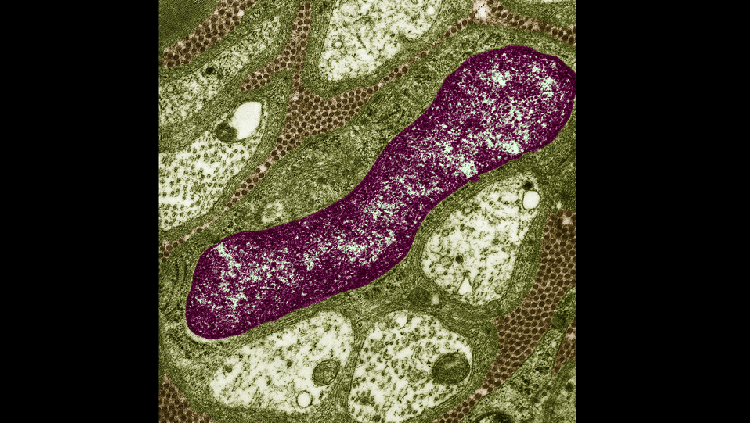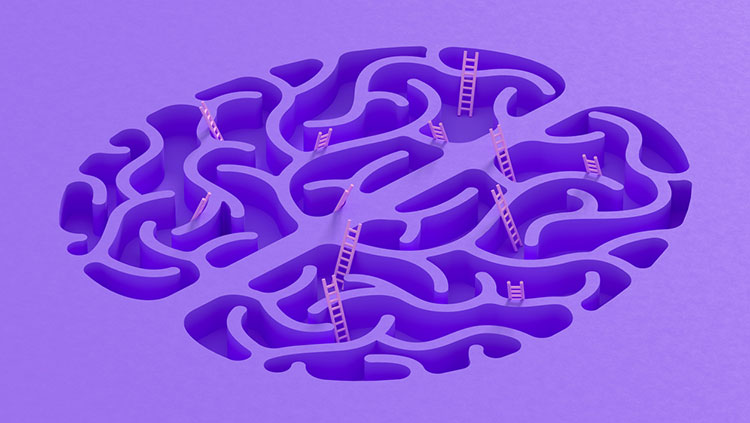Some Signals Take the Slow Road to the Brain
- Published3 Dec 2019
- Author Charlie Wood
- Source BrainFacts/SfN
For top priority information, like the fact that your bare foot is in the midst of stepping down onto a tack, special nerves wrapped in insulating myelin can’t be beat. The electric signal races down the axon in skips and hops at speeds that would earn it a ticket on the interstate. Yet more than two thirds of the axons responsible for telling you when you’re in pain lack such an accelerating covering. These “unmyelinated” nerves look like the cross-section above.
The axons themselves (white blobs) are the same. Information travels down them in a pulse of electricity. The purple center marks the nucleus of a Schwann cell, which has swallowed up these six axons to keep them safe. Because this covering replaces the myelin sheath of other nerves, signals here move at the pace of a brisk walk. This is part of the reason why pain from stubbing your toe comes in two waves: you feel a sharp pain right away, and then a duller lasting pain after.
CONTENT PROVIDED BY
BrainFacts/SfN
References
Dubuc, B. (n.d.). ASCENDING PAIN PATHWAYS. Retrieved from https://thebrain.mcgill.ca/flash/d/d_03/d_03_cl/d_03_cl_dou/d_03_cl_dou.html
Pavelka, M., & Roth, J. (2010). Unmyelinated Nerve Fibre. In M. Pavelka & J. Roth (Eds.), Functional Ultrastructure: Atlas of Tissue Biology and Pathology (pp. 322–323). doi: 10.1007/978-3-211-99390-3_165
Also In Pain
Trending
Popular articles on BrainFacts.org



















